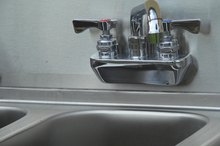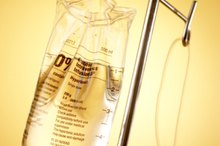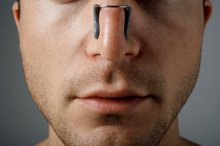How to Wear a Nasal Cannula Comfortably
Patients suffering from COPD (Chronic Obstructive Pulmonary Disease) may be prescribed supplemental oxygen delivered through large oxygen concentrators for use in the home, or portable oxygen equipment including tanks and reservoirs. A common complaint from users, particularly those using the equipment at night during sleep, is that the nasal cannula used to deliver the oxygen causes discomfort to the nose and ears.
Wear a cannula so that it causes a minimum of discomfort. The nasal cannula is a small piece of plastic tubing that is attached to a larger tube which, in turn, connects to the oxygen container. The cannula has two small prongs that are inserted into the nostrils. If the prongs are curved, they should point downward inside the nostrils.
How to Treat Severe Post Nasal Drip
Learn More
Lift the tubes on either side of the nose and fit them over the ears. Then move the slider up under the chin to adjust for fit.
Ease the discomfort to the face and nose by wrapping self-sticking white "hurt-free" fabric first aid tape around the cannula tube on each side, from the prongs all the way to the point where the tube fits over the ears.
The Best CPAP BiPAP Masks for High Pressure
Learn More
Wrap the fabric tape double thick at the points where the tube is in contact with the face if the tube leaves indentations or marks on the face during sleep. Also, be sure that the tube rests high up on the cheekbones.
Tips
The patient might want to have an extra cannula on hand to switch with the taped one, to be worn away from home.
Related Articles
References
- American Lung Association. Lung procedures and tests. Updated October 25, 2018.
- Goldstein MR, Kadri M, Merritt TA, et al. The difference between high flow nasal cannula and continuous positive airway pressure. Pediatrics. 2018;142(1):MeetingAbstract. doi:10.1542/peds.142.1_MeetingAbstract.822
- Lodeserto FJ, Lettich TM, Rezaie SR. High-flow nasal cannula: mechanisms of action and adult and pediatric indications. Cureus. 2018;10(11):e3639. doi:10.7759/cureus.3639
- Poindexter BB, Feng R, Schmidt B, et al. Comparisons and limitations of current definitions of bronchopulmonary dysplasia for the Prematurity and Respiratory Outcomes Program. Ann Am Thorac Soc. 2015;12(12):1822–1830. doi:10.1513/AnnalsATS.201504-218OC
- Nishimura M. High-flow nasal cannula oxygen therapy in adults: physiological benefits, indication, clinical benefits, and adverse effects. Respir Care. 2016;61(4):529-41. doi:10.4187/respcare.04577
- WHO. Annex I: Cleaning and disinfection of respiratory equipment. IN: Infection Prevention and Control of Epidemic- and Pandemic-Prone Acute Respiratory Infections in Health Care. Updated 2014.
- Mach WJ, Thimmesch AR, Pierce JT, Pierce JD. Consequences of Hyperoxia and the Toxicity of Oxygen in the Lung. Nursing Research and Practice. 2011. Article ID 260482. doi:10.1155/2011/260482
- Medicare. Oxygen Equipment and Accessories. Medicare.gov.
- Medline Plus. Using Oxygen at Home. U.S. National Library of Medicine website.
Tips
- The patient might want to have an extra cannula on hand to switch with the taped one, to be worn away from home.
Writer Bio
This article was written by the CareerTrend team, copy edited and fact checked through a multi-point auditing system, in efforts to ensure our readers only receive the best information. To submit your questions or ideas, or to simply learn more about CareerTrend, contact us [here](http://careertrend.com/about-us).








